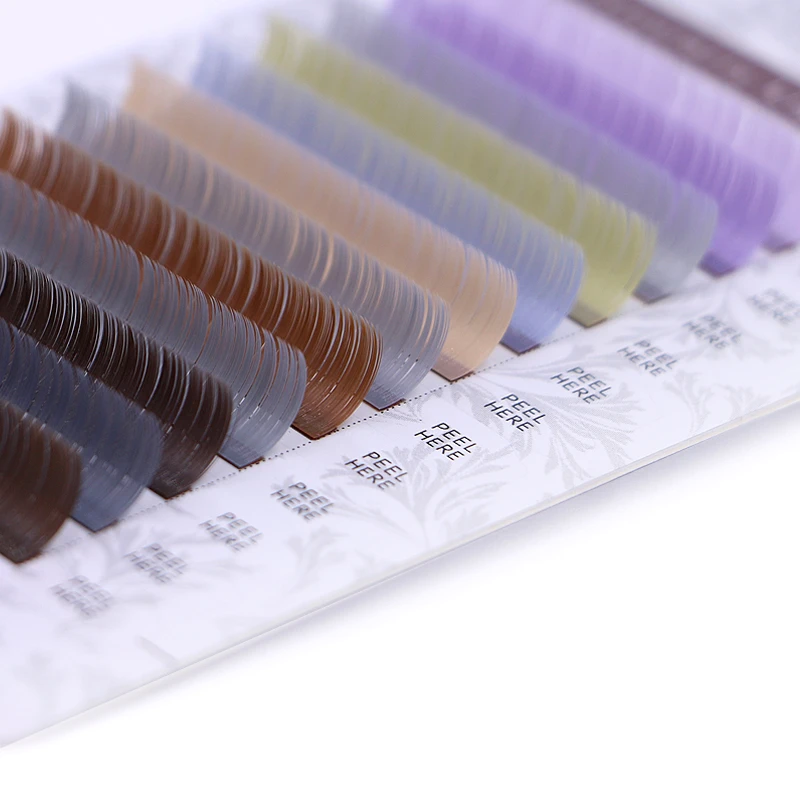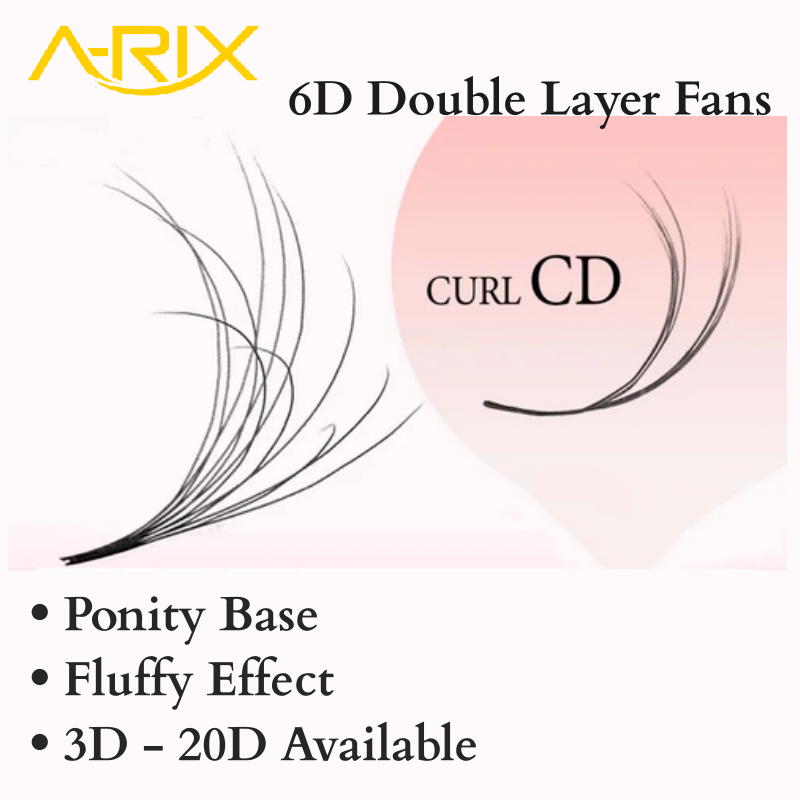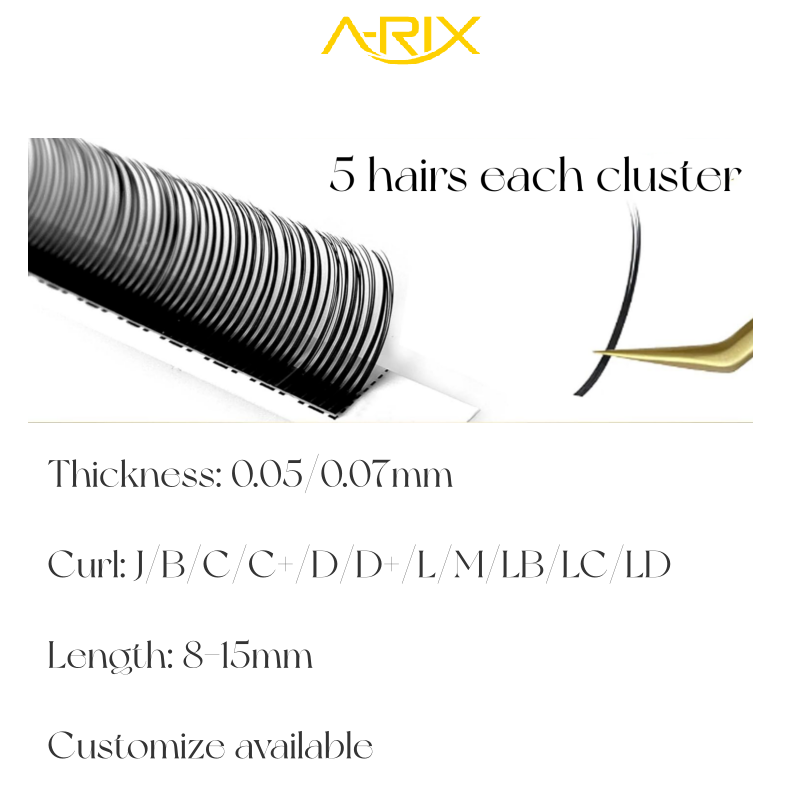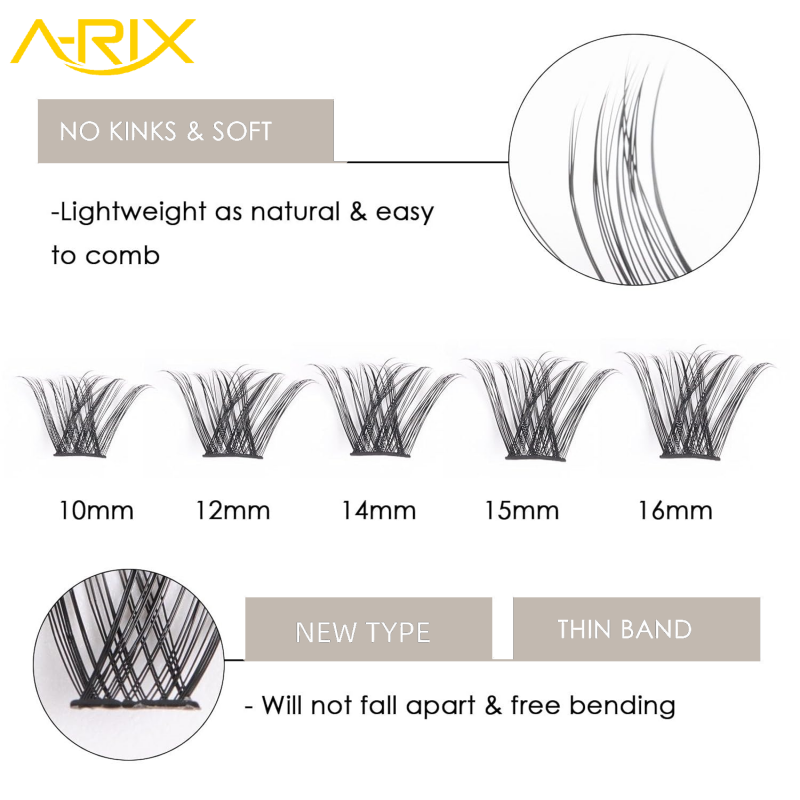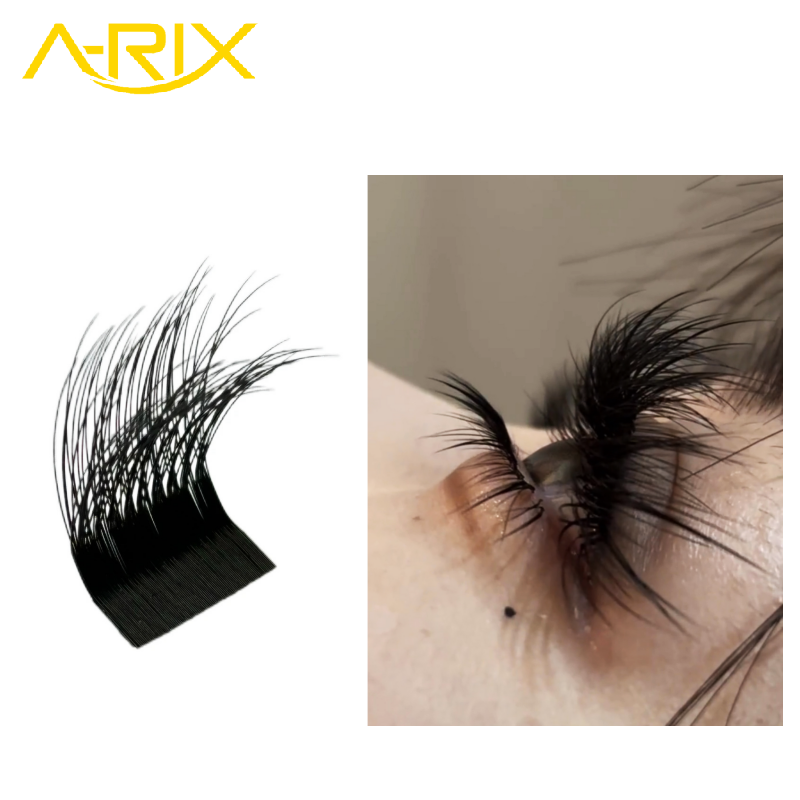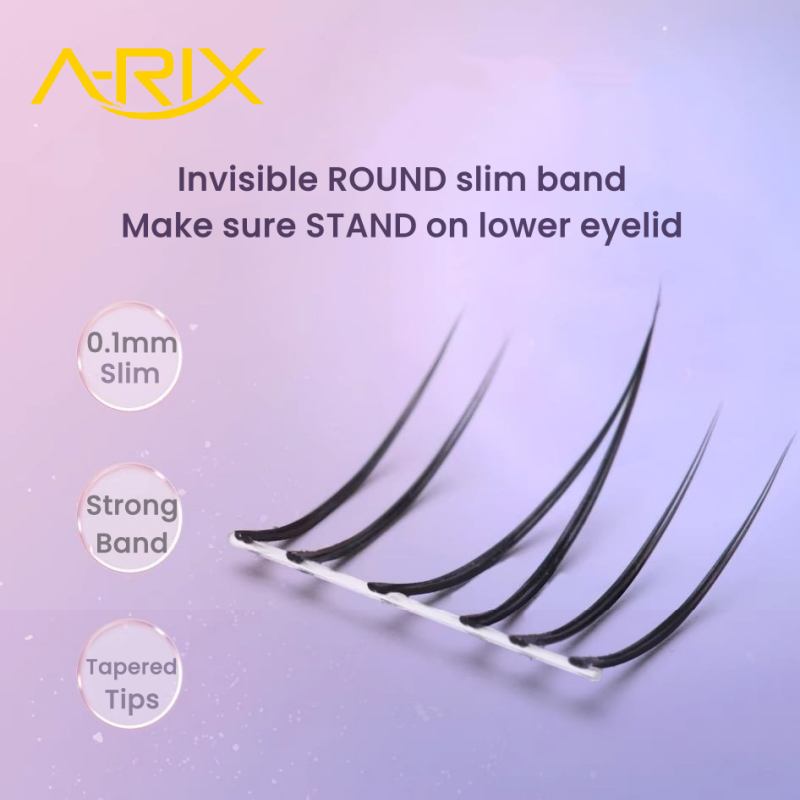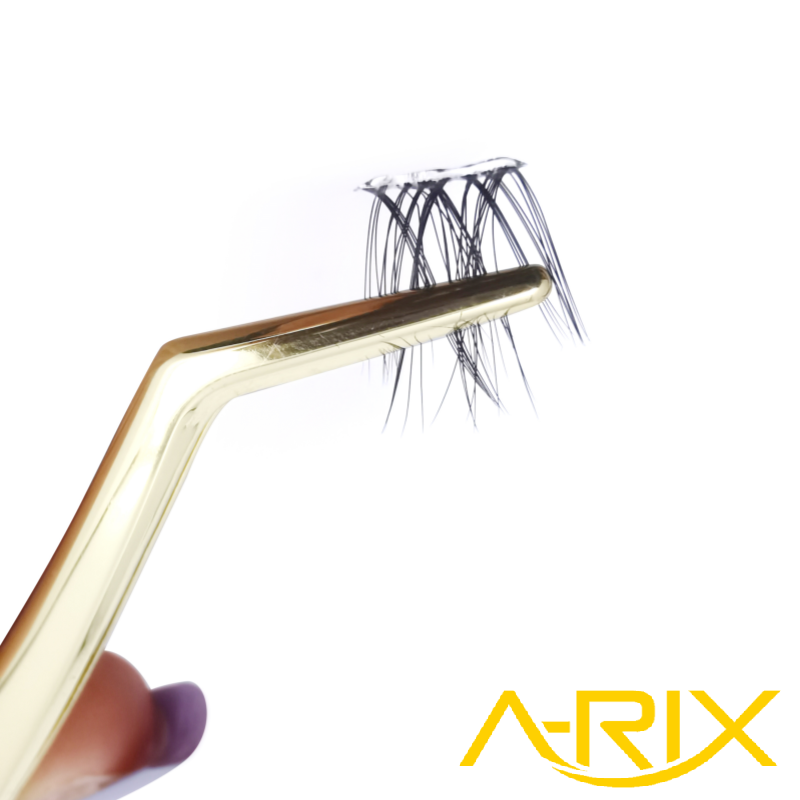Ellipse lashes, classic lashes, and regular lashes are different types of eyelash extensions, each with its unique characteristics and purposes. The choice between these types depends on the client's preferences, natural lashes, and the desired look. Let's compare and evaluate each type:
1. Classic Eyelash Extensions:
Characteristics: Classic eyelash extensions are a traditional technique where one false lash is applied to each natural lash of the client.
Effect: They provide a natural, soft look, adding length and volume to the lashes.
Classic lashes are the most basic type of eyelash extensions. They involve attaching one individual synthetic lash to one natural lash, resulting in a one-to-one ratio. Classic lashes provide natural-looking length and some added volume. They are suitable for clients with a good number of healthy natural lashes and who prefer a subtle enhancement.
Pros: Suitable for clients who desire added length and volume while maintaining a natural appearance. Ideal for clients with relatively dense and healthy natural lashes.
Cons: May not offer as much volume and drama as other techniques. Achieving desired volume may require more time and work.
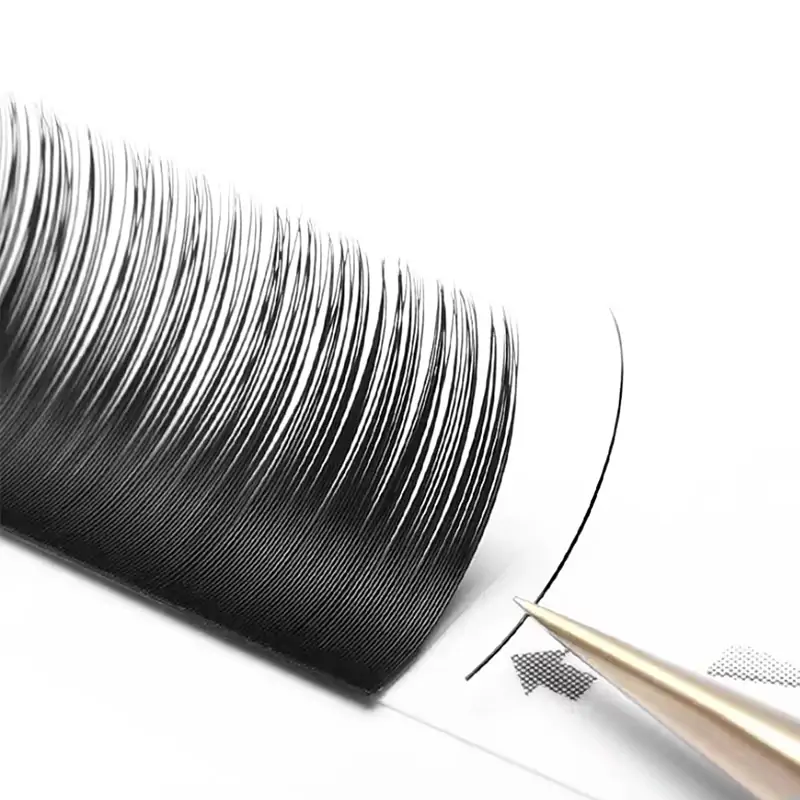
2. Regular Eyelash Extensions:
Characteristics: Regular eyelash extensions also involve applying one false lash to each natural lash, similar to classic extensions.
Regular eyelash extensions, also known as classic eyelash extensions, are a popular and widely used type of semi-permanent eyelash enhancement. In this technique, individual synthetic lash extensions are applied to each natural lash using a specially formulated adhesive.
Effect: Like classic extensions, they provide a natural, soft look.
Pros: Suitable for clients who desire added length and volume but may require more false lashes to achieve the desired effect.
Cons: Compared to classic extensions, achieving the same effect may require more time and the use of more false lashes.
3. Ellipse Lashes:
Characteristics: Ellipse lashes have a flat, elliptical cross-section, making them wider and thinner compared to traditional round cross-section lashes.
Ellipse lashes, also known as flat lashes, have a unique oval-shaped cross-section instead of the traditional round shape. The flat shape provides a broader base, allowing for better adherence to the natural lash. Ellipse lashes are lighter in weight than classic lashes but provide more volume. Multiple ellipse lashes can be applied to a single natural lash, creating a fuller look without adding too much weight.
Effect: They offer a more dramatic and voluminous effect while maintaining comfort and a natural appearance.
Pros: Due to their elliptical cross-section, ellipse lashes are lighter, more durable, and more comfortable than traditional round lashes. They provide a greater coverage area, reducing the number of false lashes required and saving application time.
Cons: May not provide an absolutely natural effect like classic lashes, but offer more volume and drama compared to classic extensions.
Choosing the suitable type of eyelash extensions depends on the client's needs, expectations, and the condition of their natural lashes. Professional lash technicians should recommend the most appropriate eyelash extension technique based on the client's requirements and eye characteristics.
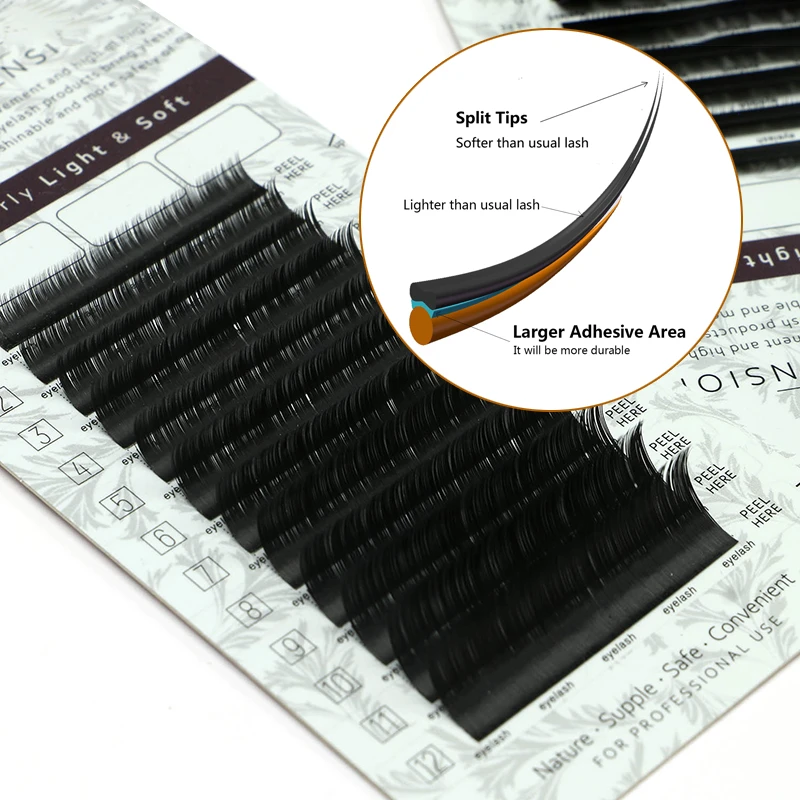
Overall Evaluation:
The "better" choice among these options depends on individual preferences and the condition of the client's natural lashes. Here are some general guidelines:
Classic Lashes are ideal for clients who want a natural and subtle enhancement with a one-to-one ratio. They work well for individuals with good natural lash density.
Ellipse Lashes are suitable for clients who desire more volume without the weight of traditional lashes. They are excellent for those with sparse or thin natural lashes and want a fuller appearance.
Ultimately, the best choice can be determined through a consultation with a trained lash technician. They can assess the client's natural lashes, discuss preferences and lifestyle, and recommend the most suitable type of lash extensions for achieving the desired look. Proper application and aftercare are crucial to maintaining healthy natural lashes regardless of the type of extensions chosen.
Regular eyelash extensions are essentially the same as classic eyelash extensions, involving the application of one individual synthetic lash to one natural lash. As they have the same technique and one-to-one ratio, the pros and cons listed earlier for classic lashes would also apply to regular lashes.
In summary, both classic and regular lashes provide a natural and subtle enhancement, suitable for clients with good natural lash density who desire a simple and elegant look. Ellipse lashes, on the other hand, offer more volume without the added weight, making them ideal for clients with sparse or thin natural lashes who desire a fuller appearance.
Ultimately, the choice between classic, regular, and ellipse lashes still depends on the client's preferences, natural lashes, and the desired look. A consultation with a professional lash technician can help determine the most suitable type of lash extensions to achieve the client's desired result.
FAQ
1. What are Ellipse Lashes, Classic Lashes, and Regular Lashes?
Ellipse Lashes: Ellipse Lashes, also known as flat lashes, have an oval-shaped cross-section rather than the traditional round shape of classic and regular lashes. They are designed to provide more volume while being lighter in weight.
Classic Lashes: Classic Lashes involve applying one individual synthetic lash extension to one natural lash, creating a one-to-one ratio. They provide a natural and subtle enhancement to the lashes.
Regular Lashes: Regular Lashes are essentially the same as classic lashes, involving the application of one false lash to each natural lash.
2. How do Ellipse Lashes differ from Classic and Regular Lashes?
Shape: Ellipse Lashes have an oval-shaped cross-section, while Classic and Regular Lashes typically have a round cross-section.
Volume: Ellipse Lashes provide more volume compared to Classic and Regular Lashes due to their unique flat shape and ability to be stacked together on a single natural lash.
3. Which type of lash extension is best for a natural look?
Classic Lashes: Classic Lashes are ideal for a natural and subtle look. They create a one-to-one ratio and are suitable for clients with good natural lash density.
4. Which type of lash extension is best for adding volume?
Ellipse Lashes: Ellipse Lashes are excellent for adding volume without the weight of traditional lashes. They are suitable for clients with sparse or thin natural lashes who desire a fuller appearance.
5. Can I customize the length and curl of each lash type?
Yes, all three lash types can be customized with various lengths, curls, and thicknesses to achieve the desired look.
6. How long do each lash type last?
The longevity of lash extensions varies depending on factors such as natural lash growth cycle, aftercare, and lifestyle. Generally, they can last anywhere from 2 to 6 weeks, with touch-ups needed to maintain the desired fullness.
7. Can I get each lash type wet?
After the initial curing period, all lash types can be exposed to water, allowing clients to engage in regular activities, including swimming and showering.
8. Are these lash types suitable for all eye shapes?
Yes, all three lash types are versatile and suitable for various eye shapes and lash styles. They can be tailored to complement different eye shapes, enhancing the natural beauty of the eyes.
9. Are they suitable for sensitive eyes?
The choice of lash type is less relevant to eye sensitivity than the quality of the materials used and the skill of the lash technician. High-quality lash extensions and proper application are essential for individuals with sensitive eyes.
10. How do I choose the best lash type for me?
The best lash type depends on your personal preferences, natural lash condition, and the desired look. It's recommended to consult with a trained lash technician who can assess your natural lashes, discuss preferences and lifestyle, and recommend the most suitable type of lash extensions for you.
